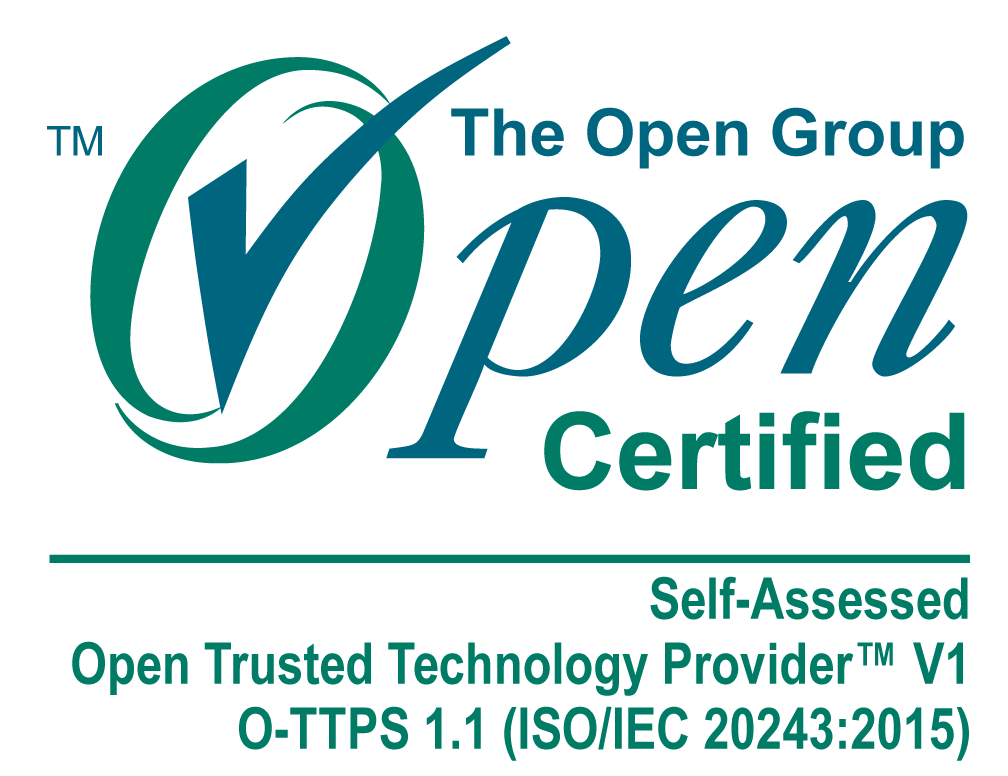Top 5 IT Investments for Federal Contractors in 2022

A new year is just around the corner, and defense undersecretary for research and engineering, Heidi Shyu, recently expanded the Pentagon’s list of technologies for prioritized development. The usual suspects are included, such as artificial intelligence (AI) and cybersecurity – but so are some unusual ones, like materials science and biotechnology.
Now is a good time for federal contractors to think about how they’ll spend their budget in 2022 as well. Following a year of innovation driven by the post-pandemic economy and cybersecurity landscape, tech trends have changed dramatically, opening up new opportunities for disruption and growth. But given the nature of trends, it always pays to ask the question: which ones are hype, and which are viable as potential business game-changers?
With the changing business landscape in mind, we are following the R&D undersecretary’s example by putting together a list of technologies federal contractors should invest in during 2022. But first, we’ll start with an explanation of “hype,” and how businesses can avoid it.
Understanding the “Hype” Behind Federal Investing
Anyone who follows the tech world knows the hype drill: new buzzwords appear and die. Remember “service-oriented-architecture” and “pivot”? Excitement for “the next big thing” flares up, followed by increased interest from investors and CTOs who pass their excitement down to the IT department.
IT investigates, and often, despite issuing a recommendation not to adopt the new technology, a mandate comes down to move forward, only to produce no tangible benefits after six months. Soon the whole world moves on, leaving the organization with yet another piece of legacy software it doesn’t need.
We call this phenomenon “hype,” and it happens whenever a technology produces inflated expectations that guarantee disappointment. Fortunately, the “hype cycle” works in predictable ways, and research firm Gartner has broken it down into five stages. The most important three are:
- Peak of inflated expectations – sensationalism and hyperbole produce unrealistic expectations for a new technology.
- Trough of disillusionment – disappointment sets in; media attention becomes critical, and investment decreases.
- Slope of enlightenment – expectations become more realistic; the real potential of a technology becomes clear, leading to a steady plateau of adoption and benefits.
While some of the technologies on our list will be familiar to readers, many are currently in the “trough of disillusionment” phase of the hype cycle. Fortunately, this provides a competitive advantage to businesses that establish realistic expectations for outcomes and a clear implementation strategy that involves employee training and ongoing support.
Artificial Intelligence (AI) and Machine Learning (ML)
It’s not surprising that Artificial Intelligence (AI) is still front and center of the Pentagon’s technology wish list: following breakthroughs in neural networks at the beginning of the 2010s, AI continues to evolve at a breakneck pace, as has its potential for transformation – so much that it’s expected to add $16 trillion to the global economy by 2030.
However, real adoption of AI outside of Silicon Valley has been slow and halting, leading to disillusionment. Why? AI requires a large amount of data that isn’t always available. Second, AI struggles to generalize, specializing at well-defined tasks that can limit its utility. Above all, AI epitomizes the old adage “garbage in, garbage out.” if you don’t take the time to properly design and train an AI model, the results will be less than impressive.
Still, AI has enormous potential for federal agencies and organizations. Use cases include:
- Intelligent Automation (AI): taking repetitive tasks performed by humans and offloading it to computers.
- Improved decision making: the ability to analyze and make decisions based on a prescribed set of modeling data; more advanced AI implementations can even learn and improve as the dataset grows.
- Improved cybersecurity and detection of insider threats: with innovations in AI/ML and edge computing, cybersecurity has become more proactive, giving organizations increased insight into the real-time health of their networks.
- Development of advanced tech applications: voice recognition, natural language processing (NLP), robotics, etc.
As AI-based solutions become more commoditized in everyday business applications such as CRM software and IT database programs, AI will also become easier to adopt across the organization, making 2022 an ideal time to get on the bandwagon.
Computing at the Edge
Government organizations increasingly depend on remote devices like IoT (originally a “hype” technology that actually panned out), vehicular fleets, cameras and industrial equipment. This creates an increased data processing burden that is difficult to handle, especially when milliseconds count and Internet connectivity is lacking.
Right now, 5G networks are helping with increased bandwidth and reduced latency. But in many cases, such as in remote environments where even 2G is difficult to access, processing data from the client side – or the “edge” – is a better solution. Currently, only about 10% of enterprise data is processed at the edge – but Gartner expects that number to reach 75% by 2025.
Applications for Edge Computing in federal organizations are extensive, ranging from security and law enforcement to healthcare and remote employment. In the near future, it will also play an important role in AI adoption, data analytics and increased cloud dependence.
As the number of Internet-connected devices explodes, tech-focused contractors will have a unique opportunity to innovate and push the boundaries of edge computing, fog computing, and other distributed computing paradigms.
Anything-as-a-Service (XaaS)
Software-as-a-Service (SaaS) has transformed the way businesses operate across the public and private sectors, along with Infrastructure-as-a-Service (IaaS) and Platform-as-a-Service (PaaS). But as-a-service models have the potential to expand beyond computing tasks, and are already doing so.
Today a majority of IT infrastructure – from hardware to cybersecurity and IoT – can be provisioned through a service model, providing much-needed flexibility during a time when remote employment is rising, and scalability is a competitive advantage. Consequently, the XaaS market is expected to surpass $340 billion by 2024, with Gartner predicting that 95% of new federal IT investments will be service solutions by 2025.
For federal contractors, the modernization opportunities provided by XaaS are exciting, and limitless in their potential. At the moment, AI, data science, and edge computing are just a few cutting-edge technologies available as-a-service – the future will only bring more.
Robotic Process Automation (RPA)
While less sophisticated than AI and other forms of intelligent automation, Robotic Process Automation (RPA) has become more important for government organizations in the face of staffing shortages, retirements, and increased civilian service expectations.
Between 2019 and 2020, deployment of RPA increased across 23 U.S agencies, handling time-consuming processes like data collection, data entry and verification. Meanwhile, a study from Accenture found that RPA adoption led to significant cost savings, increased productivity and workforce agility across many organizations.
Despite the benefits, RPA adoption across the federal government is still in its infancy. But with increased R&D spending from the Biden administration across multiple industries and a low barrier for entry, there are many opportunities to explore the ways RPA can improve process efficiency for IT, human resources, administrative processes and procurement.
Adaptive Cybersecurity
“Adaptive security” was listed by Gartner as a top government technology trend for 2021. Since then, its importance has increased as the year evolved, ushering in high-profile software supply chain attacks, a rise in ransomware and phishing incidents, and new legislation aimed at increasing cyber-preparedness across government agencies.
In this context, today’s contractors have a lot to worry about, especially as remote work, IoT and increased cloud adoption blur the lines of an organization’s security perimeter by introducing new attack surfaces. Fortunately, adaptive cybersecurity strategies dispense with the concept of “perimeter” altogether with 24/7 surveillance that responds to threats in real-time.
As a paradigm, adaptive cybersecurity encompasses many methods and techniques for addressing cyber threats, no matter where they originate from. This extends to AI and ML-based threat detection, which can learn patterns of compromised behavior and improve with time. As threat actors become more sophisticated, these techniques will become essential to protecting Controlled Unclassified Information (CUI) and national security at large.
Epoch's Conclusion
As mentioned in the beginning of this article, some of the top technologies for federal investment in 2022 – including AI and edge computing – have experienced slumps in popularity and adoption, even though they are poised to revolutionize federal businesses on the whole. But why is that?
While there are many reasons, a leading cause of disillusionment is trying to go it alone – DIYing these often complex technologies and hoping for the best. But businesses that invest in new technologies without prior expertise or the help of a capable implementation partner are likely to be disappointed, no matter how good the product is. This coming year, choose a partner that will help you to make the most of your investment.
At Epoch Concepts, we design, source, and integrate solutions to empower our customers. From storage to infrastructure, cybersecurity, and cloud solutions, we architect fully customizable IT solutions and offer continual customer support. Above all, we put the security of our customers first and work to create an impenetrable supply chain they can trust. In a cybersecurity landscape full of risk, Epoch Concepts is here to give you peace of mind and help you every step of the way. Contact us to learn more.


